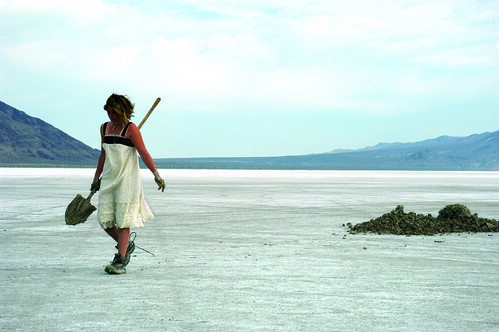
Sheryl Conkelton and Tyler School of Art’s Temple Gallery are hosting “Field Reports: Documents and Strategies from Land Arts of the American West” through Feb. 28. The exhibition will display the fieldwork of students accepted into the Land Arts program, which artist Bill Gilbert founded in 2000 and architect Chris Taylor joined in 2002.
“Rather than having a show about seven or 10 specific works and saying this represents land arts, to me it seemed more important to present the program as work and focus on documenting strategy,” Taylor said. “[To] focus on approach, rather than products.”
It’s important that spectators of the show know more about the Land Arts program, also referred to as Earth Arts, to appreciate the grueling work put into the students’ presentations. The program promises an exhibition that will leave spectators walking away with a high appreciation for history of the land.
The Land Arts program, which Taylor describes as an extensive study-abroad program in the States, holds many challenges for the 14 students accepted to work alongside Taylor and Gilbert. The program commits to accomplishing one main goal.
“We need more people connecting to the landscape and dealing with change in the landscape in diverse ways,” Taylor said.
If accepted, students have the opportunity to visit various sites of Land Art, a movement started in the 1960s and 1970s, in which artists utilize the Earth as a piece of art and incorporate the landscape.
But it’s not always easy.
“There will be dirt in your food. You will be miserable at times, [but] it will be the most amazing thing ever,” Taylor said. “[It’s] not some sort of survival wilderness boot camp, but at the same time, we found over the years that it’s really important to be with people who want to be out there.”
Land Art also focuses on the human effects of the land, whether intentional like the Spiral Jetty by Robert Smithson and Double Negative by Michael Heizer, or a result of ancient people and forces like Chaco Canyon and the Grand Canyon.
“How to think of Land Arts is more than just looking at single paintings by single authors … we’re not walking through a museum,” Taylor said. “There isn’t some formula where every student needs to get to this certain place or get an ‘A’ on the test. It’s ultimately about the work that…they bring back into their practice.”
In April 2009, a book documenting the work of the Land Arts program will be published, documenting the work of Gilbert’s and Taylor’s students. It will also include writings by William L. Fox, who translates how human thought transforms into landscape.
There are also interviews with people who contributed to Land Arts such as Matthew Coolidge, director of the Center for Land Use Interpretation, and experts in Native American art.
However, before the book is published, Temple students and Philadelphia residents alike have the opportunity to experience its contents in the form of this exhibition.
Taylor will hold a workshop in early January for students in the Philadelphia area, including several Temple students. The workshop will act as an accelerated version of the Land Arts program.
It will be the first time the program will be held in a large urban setting like Philadelphia, and Taylor hopes participants will gain a new appreciation for the city’s landscape and explore aspects of it they’ve never realized before.
Tiffany Yoon can be reached at tiffany.yoon@temple.edu.


Be the first to comment